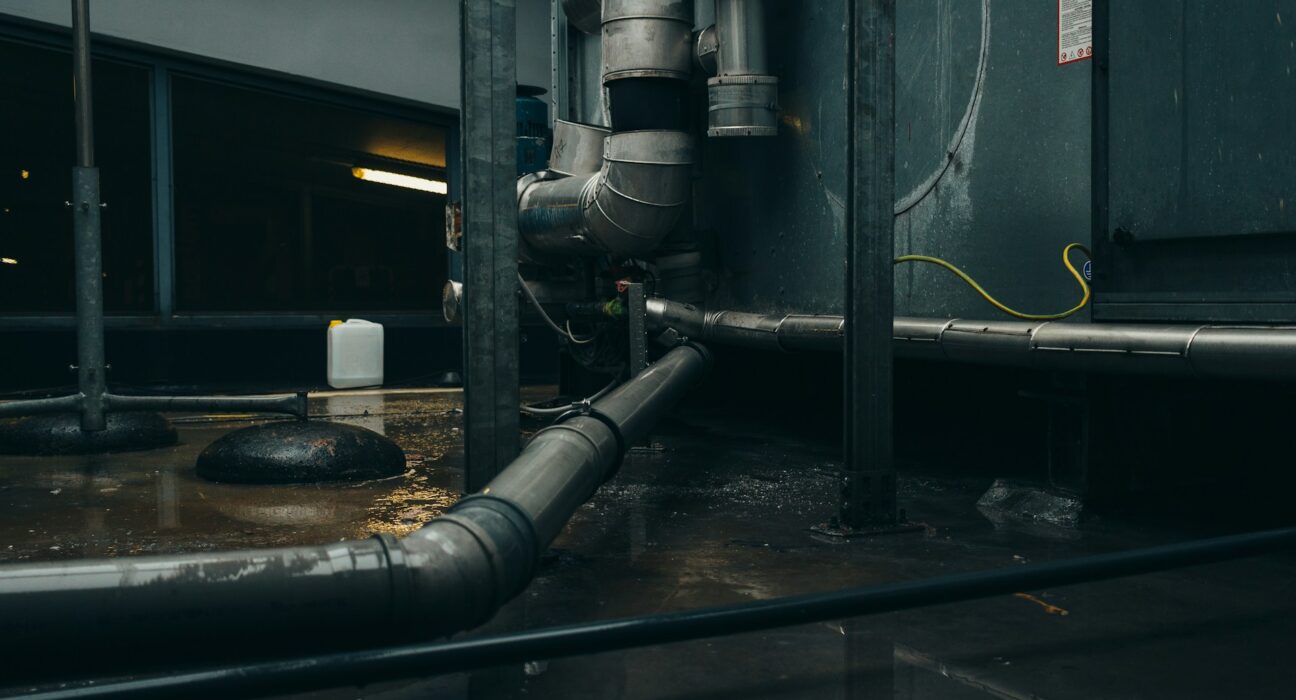Industrial facilities across the manufacturing, petrochemical, and food processing sectors face a critical decision when selecting heating solutions for their piping systems. The choice between in-pipe and on-pipe heat trace configurations can significantly impact operational efficiency, maintenance costs, and system reliability over the long term.
Both heating methods serve the essential purpose of maintaining optimal temperatures in piping networks, but they achieve this through fundamentally different approaches.
In-pipe heating involves installing heat trace wire directly inside the pipeline, while on-pipe heating attaches the heating elements to the exterior surface of the pipe. Each system offers distinct advantages and faces unique challenges that facility managers must carefully evaluate.
Understanding the technical specifications, installation requirements, and performance characteristics of each heating method enables informed decision-making. This analysis examines the key factors that influence system selection, helping you determine which approach aligns best with your operational requirements and budget constraints.
Understanding In-Pipe Heat Trace Technology
In-pipe heating systems utilize specialized heat trace wire installed directly within the pipeline interior. This configuration places the heating element in direct contact with the process fluid, enabling precise temperature control and uniform heat distribution throughout the pipe diameter.
Design and Installation Characteristics
The installation process requires careful planning and specialized expertise. Technicians must:
- Remove existing pipe sections to access the interior
- Install heating cables along predetermined paths within the pipe
- Secure heating elements using appropriate mounting hardware
- Seal all penetration points to maintain system integrity
- Test electrical continuity and thermal performance before commissioning
Performance Advantages
In-pipe heating delivers several operational benefits:
- Superior heat transfer efficiency: Direct contact with process fluids maximizes thermal energy transfer
- Uniform temperature distribution: Eliminates hot spots and cold zones common in external heating methods
- Reduced energy consumption: Enhanced efficiency translates to lower operating costs
- Precise temperature control: Real-time monitoring and adjustment capabilities maintain optimal conditions
Application-Specific Considerations
This heating method excels in specific industrial scenarios:
- High-viscosity fluid transport where temperature uniformity is critical
- Processes requiring precise temperature maintenance within narrow tolerances
- Systems where external heating access is limited or impractical
- Applications demanding maximum energy efficiency
On-Pipe Heat Trace System Overview
On-pipe heating systems attach heat trace wire to the external surface of pipelines, typically beneath insulation layers. This conventional approach offers flexibility and ease of maintenance while providing effective temperature management for diverse industrial applications.
Installation and Configuration
External heating systems offer streamlined installation procedures:
- Mount heating cables directly to pipe surfaces using specialized clamps
- Apply thermal interface materials to enhance heat transfer
- Install insulation layers to minimize heat loss
- Connect electrical controls and monitoring equipment
- Commission system with comprehensive performance testing
Operational Benefits
On-pipe systems provide several practical advantages:
- Simplified maintenance access: External mounting enables routine inspection and repairs without process interruption
- Cost-effective installation: Lower initial investment compared to internal heating methods
- Versatile application range: Suitable for various pipe materials and configurations
- Reduced downtime: Maintenance activities require minimal process disruption
Performance Characteristics
External heating systems demonstrate reliable performance across multiple metrics:
- Consistent heat delivery for standard temperature maintenance requirements
- Adequate temperature control for most industrial processes
- Proven reliability in diverse environmental conditions
- Compatibility with existing piping infrastructure
Installation Requirements and Complexity
The complexity of installation varies significantly between heating methods, impacting project timelines, labor costs, and operational disruption.
In-Pipe Installation Challenges
Internal heating systems present unique installation requirements:
- Process shutdown necessity: Installation requires complete system drainage and shutdown
- Specialized equipment needs: Requires specialized tools and installation hardware
- Extended installation timeline: Complex procedures increase project duration
- Higher labor costs: Skilled technicians command premium rates for specialized work
On-Pipe Installation Simplicity
External systems offer more straightforward installation procedures:
- Minimal process disruption: Installation possible during scheduled maintenance windows
- Standard tooling requirements: Uses conventional electrical and mechanical tools
- Faster project completion: Streamlined procedures reduce installation time
- Lower labor costs: Standard electrical contractors can perform most installation tasks
Maintenance Considerations and Lifecycle Costs
Long-term operational success depends heavily on maintenance accessibility and lifecycle cost management.
In-Pipe Maintenance Factors
Internal heating systems present maintenance challenges:
- Limited access for repairs: Faulty components require pipe disassembly for replacement
- Higher repair costs: Complex procedures increase maintenance expenses
- Extended downtime: Repairs may require significant process interruption
- Specialized service requirements: Maintenance requires trained technicians with specialized expertise
On-Pipe Maintenance Advantages
External systems provide superior maintenance accessibility:
- Easy component access: External mounting enables quick inspection and replacement
- Reduced downtime: Most maintenance tasks can be completed during normal operations
- Standard service requirements: Conventional electrical maintenance procedures apply
- Lower lifecycle costs: Reduced maintenance complexity translates to cost savings
Performance Analysis and Energy Efficiency
Energy efficiency and thermal performance represent critical factors in system selection, directly impacting operational costs and environmental sustainability.
In-Pipe Efficiency Metrics
Internal heating systems demonstrate superior thermal performance:
- Higher heat transfer coefficients: Direct fluid contact maximizes energy transfer
- Reduced thermal losses: Internal placement minimizes heat dissipation
- Lower energy consumption: Enhanced efficiency reduces power requirements by 15-25%
- Improved temperature stability: Direct heating provides superior process control
On-Pipe Performance Characteristics
External systems offer adequate performance for most applications:
- Standard efficiency levels: Conventional heat transfer through pipe walls
- Moderate thermal losses: External mounting allows some heat dissipation
- Higher energy requirements: External heating typically requires 20-30% more energy
- Acceptable temperature control: Suitable for standard industrial processes
System Selection Criteria and Best Practices
Selecting the appropriate heating method requires a comprehensive evaluation of multiple factors specific to each application.
Technical Assessment Parameters
Consider these critical technical factors:
- Process temperature requirements: Precision needs favor in-pipe systems
- Fluid characteristics: High-viscosity fluids benefit from internal heating
- Pipe material and size: Material compatibility affects system selection
- Environmental conditions: External factors influence heating method suitability
Economic Evaluation Factors
Financial considerations impact long-term viability:
- Initial capital investment: Compare upfront costs for each system type
- Installation expenses: Factor in labor and equipment costs
- Operational energy costs: Evaluate long-term energy consumption differences
- Maintenance and repair costs: Consider lifecycle maintenance requirements
Risk Assessment Components
Evaluate operational risks associated with each system:
- Failure mode analysis: Understand potential failure points and consequences
- Maintenance downtime impact: Assess process interruption costs
- Safety considerations: Evaluate personnel and equipment safety factors
- Regulatory compliance: Ensure adherence to industry standards and codes
Making the Right Choice for Your Application
The decision between in-pipe and on-pipe heating trace systems ultimately depends on balancing performance requirements, economic constraints, and operational priorities specific to your facility.
In-pipe heating systems excel in applications demanding maximum energy efficiency, precise temperature control, and uniform heat distribution. These systems justify their higher initial investment through reduced operating costs and superior performance in critical processes. However, the increased complexity and maintenance challenges must be carefully considered.
On-pipe systems provide reliable, cost-effective heating solutions for standard industrial applications. The simplified installation, maintenance accessibility, and lower initial costs make these systems attractive for facilities prioritizing operational flexibility and budget management.
Successful system selection requires thorough analysis of your specific requirements, including process parameters, economic constraints, and long-term operational goals. Consulting with experienced heating system engineers can provide valuable insights to ensure optimal system selection and implementation success.

